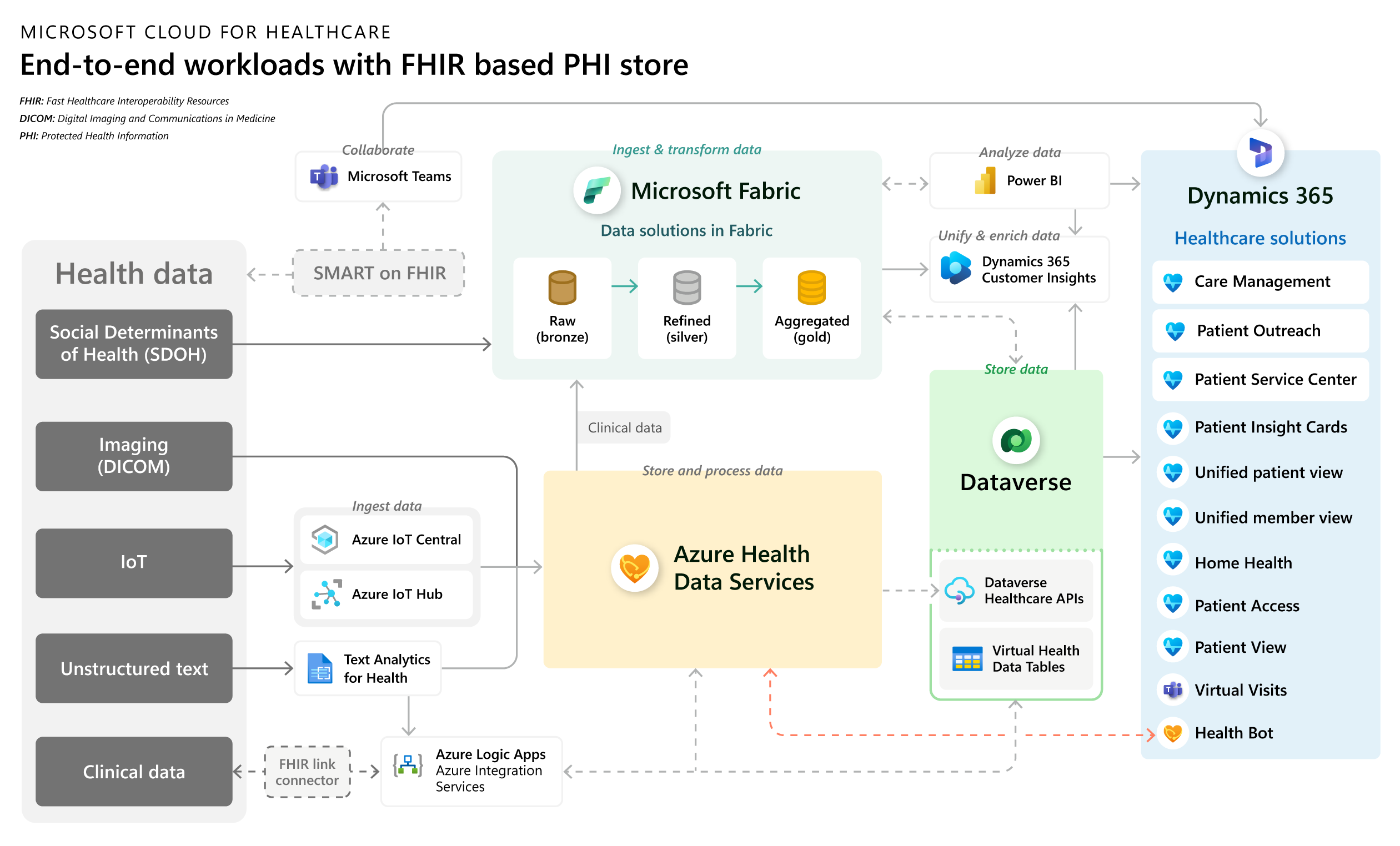End-to-end workloads
As your organization modernizes processes, it would also look at overhauling the healthcare provided to your patients. For example, providing services such as continuous patient monitoring, health data access to patients, or bringing medical imaging data to the cloud. Azure Health Data Services delivers a FHIR-based PHI store that meets health compliance and governance rules. It enables you to quickly connect disparate health data sources and formats such as structured, imaging, and device data, and normalize it to be persisted in the cloud. For example, healthcare organizations can ingest Internet of Things (IoT) data from medical devices as clinical observations using the MedTech service.
The following diagram depicts the end-to-end reference architecture for Microsoft Cloud for Healthcare.
Download a printable PDF of this reference architecture diagram.
Dataverse healthcare APIs enable you to exchange health data as FHIR bundles with electronic health records (EHRs), and interact with Dataverse using the FHIR standard.
Virtual health data tables enable you to optimize cloud hosting expenses and virtualize clinical reference data, reducing the need to replicate EHR data throughout operational stores.
Azure Health Data Services allows you to ingest clinical and protected health information (PHI) data from multiple sources into a single place. This approach allows upstream services, Microsoft, and partner solutions to use the ingested data.
Text Analytics for health extracts and labels relevant medical information from unstructured text such as doctor's notes, discharge summaries, clinical documents, and EHR data.
